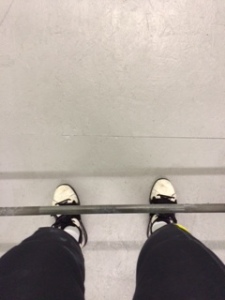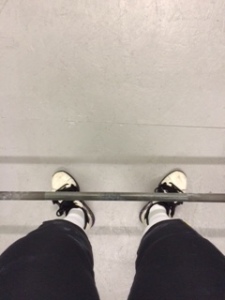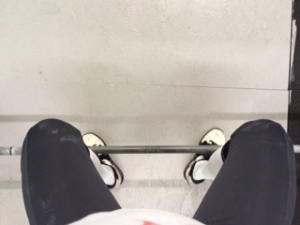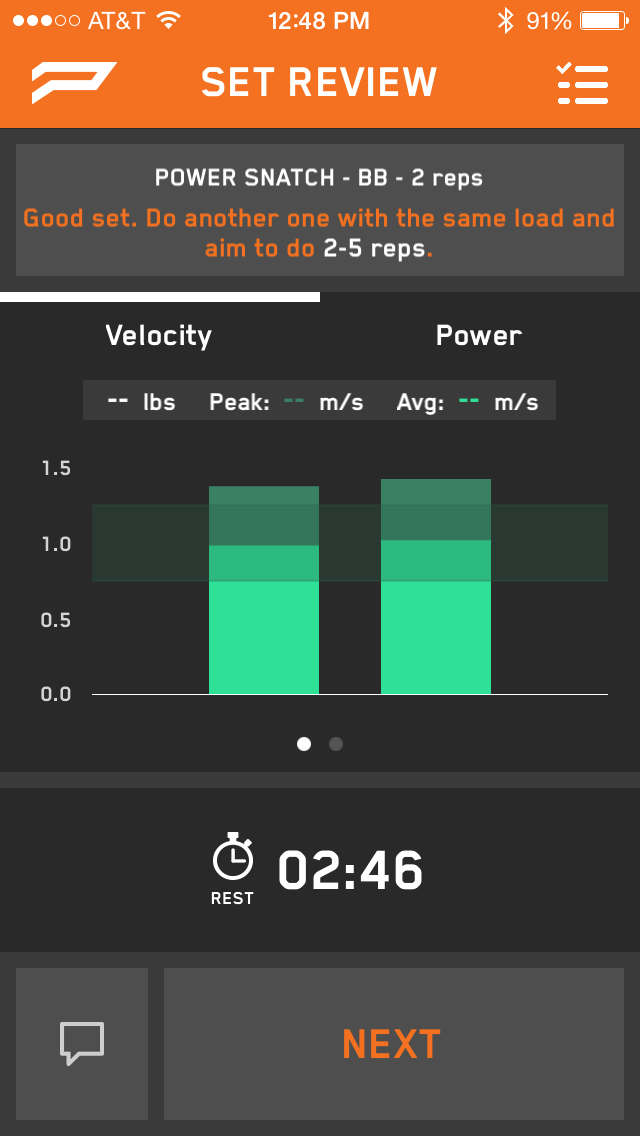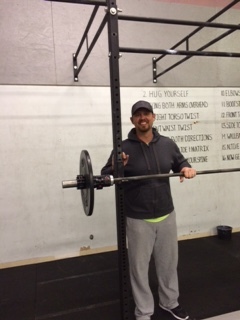“Velocity Based Training (VBT) is a new training methodology that is taking the world of strength and conditioning by storm. Velocity Based Training helps regulate the load and volume prescribed, helps determine as well as whether the load applied is appropriate for the athlete and to also determine whether the athlete is reaching the point of failure, before they actually fail.
For decades, coaches knew that the speed of movement during training is important. Unfortunately, the vast majority of coaches had to rely on subjective assessment of the athlete’s movement. Tools have been available to measure velocity, but so far they have been difficult to use, difficult to transport, and often outside of the budget of most coaches. Until Now.
Velocity Based Training can be used to accomplish the following goals:
- Avoid under- or over-training by monitoring speed of movement
- Optimize training load and volume based on training goals (Strength, Endurance, Speed)”
The library of movement patterns the device will recognize is actually pretty huge. There are hang snatches, power snatches and hang power snatches in addition to snatches just for an example. There are deadlifts, wide grip deadlifts, sumo deadlifts. Behind the neck press and push press variations in addition to military press. There are no pause variations that I can tell, but I’m not sure that’s all that big an omission.
What is nice about it telling you max velocity/power and average velocity/power is that for the oly lifts you can get a better sense of just how much you’re really putting into the second pull when you look at the difference between peak and average. It’s as close as you can come in a reasonably priced device to the much fancier info you can get with $10,000 equipment in a lab. Some video programs will approximate this for you, but again, it requires taking video, marking what needs to be tracked and giving the video analyzer information on distances. Not nearly as easy as the PUSH band.
The app that comes with the device will analyze your set and give you advice based on the goal you set within your profile. It will tell you to move up in weight, deload or move on to another exercise.
For me it has been about 95% reliable in detecting number of reps. Sometimes it counts an extra rep if I jiggle around a lot in set-up, but there’s a feature to correct their number and it does appear to learn over time.
One of the things I really like about the PUSH is its’ ease of use. I admit that I am a little bit anti-complication (okay, borderline Luddite. Sue me). I sort of loathe my GoPro because there are simply too many settings and the editing software is great if you’re a movie producer and totally overblown if you just want to string some clips together with a subtitle. The PUSH is exactly the opposite. Lots of value for very little complexity in the accompanying phone app and device itself.
You simply turn on the device, bluetooth pair it with the phone (which happens much more seamlessly than the aforementioned loathed camera app) and you’re ready to start. You input the exercise and the weight then push start when you start moving, stop when you’re done. It does all the rest of the work automatically. You can see me hit stop and start on the forearm device in the video. No biggie.
One downside to needing an app to run the device is that I now need more stuff when I go to the gym. My phone to run PUSH app, the PUSH band, my iPod for music (since I can’t use the phone while it’s bluetoothing info with the PUSH band) and the stupid GoPro to film because I can’t use the phone. As quibbles go however, this seems very first world and goofy.
So here are screenshots of some sets of pause (I used the hang clean setting) below the knee cleans as recorded on the push and video of sets 7 and 8 so you can see what was happening and what the device recorded.
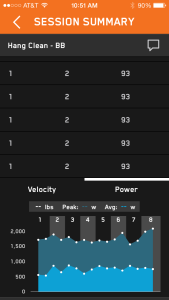
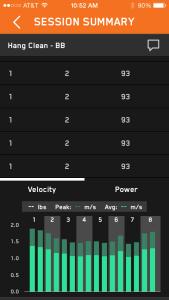
In the video I tried to slomo the first lift, normal speed the second. Compare the video to the recordings above of set 7 and 8. Interesting to me is that the first rep of set 7 was a power clean, yet it was the slowest and lowest power of the four lifts despite getting halfway to the ceiling. Also interesting is that set 8 (which was 3 warm-up sets then 5 working doubles) seemed like the best of all and if I hadn’t had other things to do I would have kept going or added weight based on this data. I guess this shows the power of getting the nervous system turned on and working at sub-maximal weight.
Here, just for interest, is a shot of the app when it gives advice on what to do for the next set:
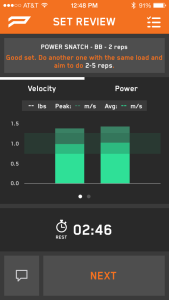
Also notice the number at the bottom. It gives a countdown between sets of three minutes which is nice for me because it saves me from having to use a Gym Boss timer or something else to keep me from rushing back too quickly.
There is also a little conversation icon in the left lower corner. You can annotate the set recording with your own notes, observations, etc which is very useful when looking back.
Wearing the device is comfortable. Even with my wrist wraps, it’s barely noticeable.
Cost is around $100 which is half of a pair of Addipowers or Nike Romaleos 2 or about the same cost as an entry level olympic weightlifting shoe. Like the shoes, you’ll use and appreciate it daily.
Update 3/5/2016 I got my PUSH Band through a beta program or KickStarter long ago. The PUSH Band now retails for $289.
There is a desktop program that will be coming out soon that will work with the band and give you even more utilities like pre-programming workouts into the device and following multiple athletes (for coaches).
Support is awesome. When I first got the device, I had to email them two different times for set-up questions. They responded promptly and with all the info I needed.
Overall I’m thrilled with this new toy.

